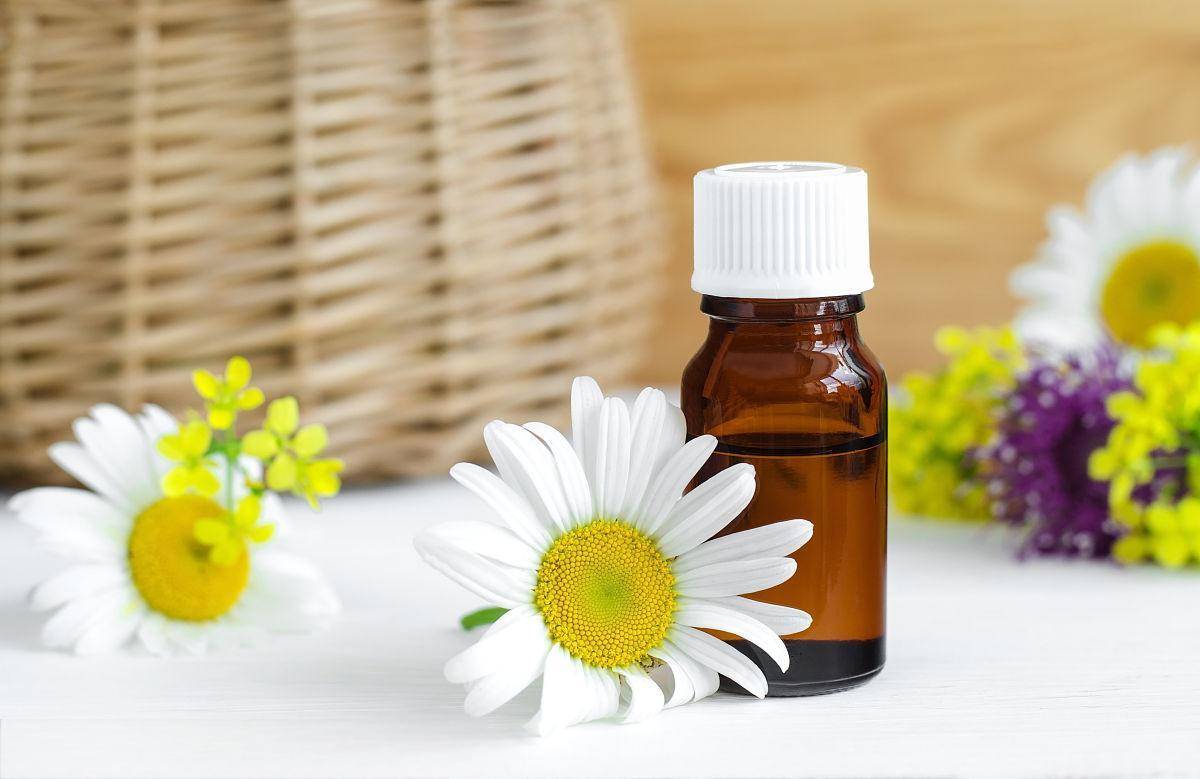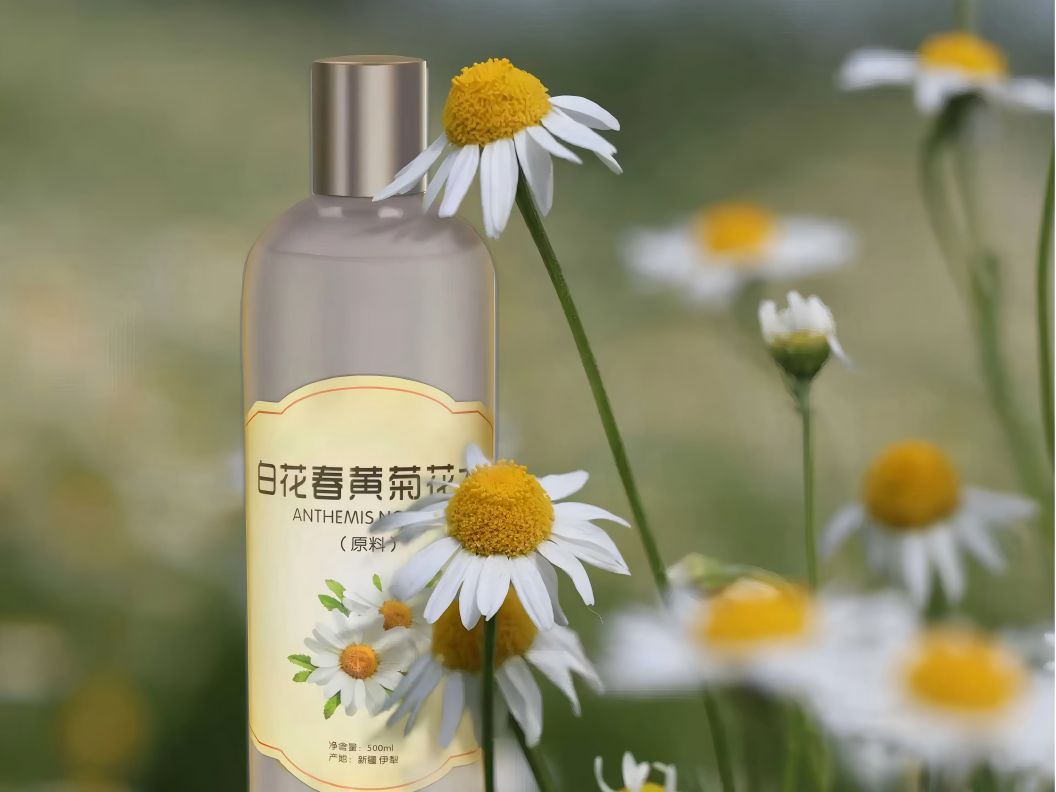What Is the Use of Chamomile Extract?
Chamomile is native to Europe and is a well-known flowering medicinal plant in the Asteraceae family. It grows to about 0.3 m tall and has inflorescences of about 2.5 cm. It is also known as Roman chamomile or German chamomile. Chamomile can grow in all types of soil and is hardy. As a medicinal herb, it can be cultivated all over the world, and is currently common in Europe and Asia. Chamomile has a large planting area in Yili, Xinjiang, China. Due to its high yield and high biological activity, it is an economic crop with great development potential. The essential oil extracted from chamomile can be used in health care and pharmaceutical products. Its main effects are to help people sleep and relieve muscle pain, especially pain caused by nervous tension, and it is also very helpful for lower back pain. At the same time, the antibacterial effect of chamomile essential oil is also widely used and is often used in food and cosmetics.
More than 120 volatile oils and phytochemicals have been extracted from chamomile, including volatile sesquiterpenes, flavonoids, polyacetylenes and coumarins [1]. Terpenoids constitute an important group of compounds in chamomile essential oil, the most important of which are bisabolol and its oxides A and B, discolouring blue and β-farnesene, which have antibacterial, anti-inflammatory, antioxidant and pain-relieving effects [2-3]. This study summarizes the research and utilization of the active ingredients of chamomile essential oil, providing a theoretical basis for further research and development and utilization of chamomile essential oil.
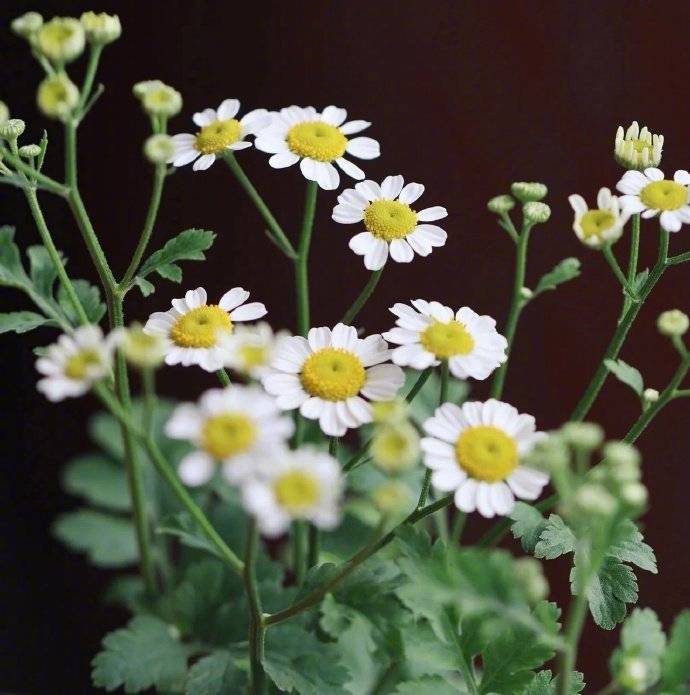
1 Antibacterial effect
According to Bail et al. [4], chamomile essential oil was found to have strong antibacterial activity against Escherichia coli, Staphylococcus aureus, Candida albicans, and Candida krusei. Rav et al. [5] found that the main active ingredients in chamomile essential oil are α-oxo-α-myrcenol A (3.1% to 56.0%), α-Bisabolol (0.1% to 44.2%), α-oxo-bisabolol B (3.9% to 27.2%), cis-en-diene bicycloether (8.8% to 26.1%), matricaria (0.7% to 15.3%), spirobolol (1.7% to 4.8%), etc. Eddin et al. [6] found that α-Bisabolol has antibacterial activity against Escherichia coli, Staphylococcus aureus, Candida albicans, Candida krusei, Candida tropicalis, and multidrug-resistant strains. Studies have shown that most strains are sensitive to α-Bisabolol and can synergize with aminoglycosides, gentamicin, and the antibiotic norfloxacin [7].
Yang Junjie [8] found through research that chamomile essential oil has an inhibitory effect on Escherichia coli, Staphylococcus aureus, and Bacillus subtilis, with the best inhibitory effect on Escherichia coli, the largest inhibitory zone, and Staphylococcus aureus and Bacillus subtilis following. Moreover, the inhibitory effect increases with the concentration of the volatile oil (see Table 1). Roby et al. [9] also found in their experiments that chamomile essential oil has an inhibitory effect on bacteria such as Escherichia coli, Candida albicans, and Bacillus cereus (see Table 2).
At present, the most suitable method for inhibiting bacterial growth is the use of preservatives. The ideal preservative is inexpensive, non-corrosive, low in toxicity, and has good antibacterial activity. The main bacterial inhibitors available are chemical preservatives. However, the safety risks associated with chemical preservatives have also attracted attention. Through the above research, natural preservatives such as chamomile essential oil have high potential in the food industry.
2 Anti-inflammatory effect
Yuan Yi et al. [10] found in a mouse ear swelling test that chamomile essential oil has a certain effect on swelling and exudation caused by acute inflammation. Chamomile essential oil can significantly reduce the degree of swelling of the mouse ear caused by xylene, and has a good anti-acute inflammatory effect. It is suggested that the mechanism by which chamomile essential oil inhibits the inflammatory response may be to inhibit the production of inflammatory mediators.
Research by Merfort et al. [11] showed that chamomile essential oil can penetrate deep layers of the skin below the surface and can be used as a topical anti-inflammatory agent. Li et al. [12] found that chamomile essential oil can inhibit the expression of IL-6 mRNA in HaCaT cells. The CCK-8 assay was used to explore the effect of chamomile essential oil at different concentrations on IL-6 mRNA expression in HaCaT cells. IL-6 mRNA is the main pro-inflammatory cytokine in psoriatic lesions, and its expression level is key to the development of psoriasis. This study shows that chamomile essential oil can inhibit the expression of IL-6 mRNA, thereby exerting an anti-inflammatory effect and alleviating psoriasis.
Shen Junlian et al. [13] conducted an experiment on mice with atopic dermatitis-like immune changes and skin damage by applying chamomile essential oil. They found that after the chamomile essential oil was applied to the damaged skin of the mice, the infiltration of inflammatory cells such as neutrophils and lymphocytes and the hyperplasia of the epidermis in the damaged skin were significantly reduced. Chamomile essential oil has the ability to affect the activation of Th2 cells (helper T lymphocytes) that are related to the onset or progression of atopic dermatitis. The application of chamomile essential oil to the dermis can inhibit the excessive production of IgE or IgG1 and down-regulate the production of Th2 cell IL-4. In addition, after applying chamomile essential oil to damaged skin related to the pathogenesis of atopic dermatitis, it can relieve frequent scratching caused by the itchy feeling of the skin.
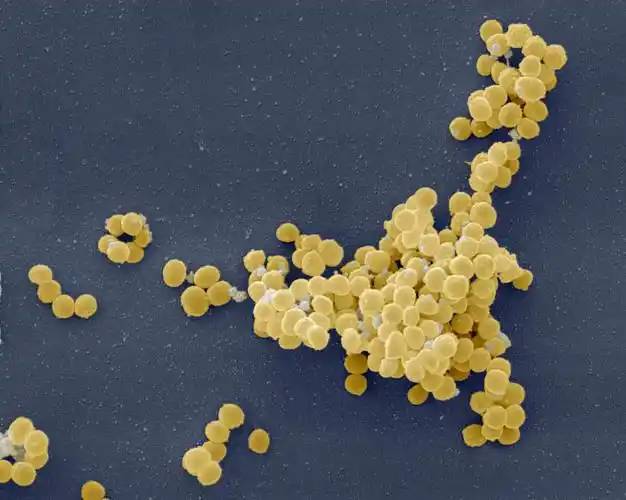
3 Antioxidant effect
Chamomile essential oil has a strong ability to scavenge free radicals and is of great significance in terms of antioxidant protection. Yuan Yi et al. [14] showed through experiments with DPPH and ABTS free radicals that Chamomile volatile oil has the ability to scavenge 1,1-diphenyl-2-trinitrophenylhydrazine (DPPH) and 2,2'-azino-bis(3-ethylbenzothiazoline-6-sulphonic acid) diammonium salt (ABTS) free radicals. Moreover, the concentration of chamomile essential oil showed a positive correlation with the DPPH and ABTS free radical scavenging rates. When the concentration of essential oil was 30 mg/mL, the DPPH free radical scavenging rate reached a maximum (96.2%), and when the concentration of essential oil was 150 g/mL, the ABTS free radical scavenging rate reached a maximum (94.9%).
Shen Junlian et al. [13] found in a mouse excision model that chamomile essential oil promotes the proliferation and migration of fibroblasts in the dermis layer, and also promotes the early generation of hair follicles in the healing tissue, so that the wound heals faster and without scarring. In the study, the wounds in the test group healed faster than those in the blank and control groups, with thicker skin, significantly more fibrocyte formation, more complete epithelialization, more complete granulation tissue formation, better tissue remodeling, and faster formation of scar tissue, which played a protective role on the wound.
Stanojevic et al. [15] found through the DPPH radical scavenging test that the degree of neutralization of DPPH radicals increased with the concentration of chamomile essential oil. The highest antioxidant activity (about 74%) was detected in the test at an EC50 value of 0.02 mg/mL, while the EC50 value of the synthetic antioxidant BHT is 0.021 mg/mL. Although BHT has slightly better antioxidant activity than chamomile essential oil, it is one of the synthetic antioxidants commonly used in industrial production and has harmful effects on the human body. Therefore, according to the current research results, chamomile essential oil can be used as a safer alternative to synthetic antioxidants in the pharmaceutical and food industries [16].
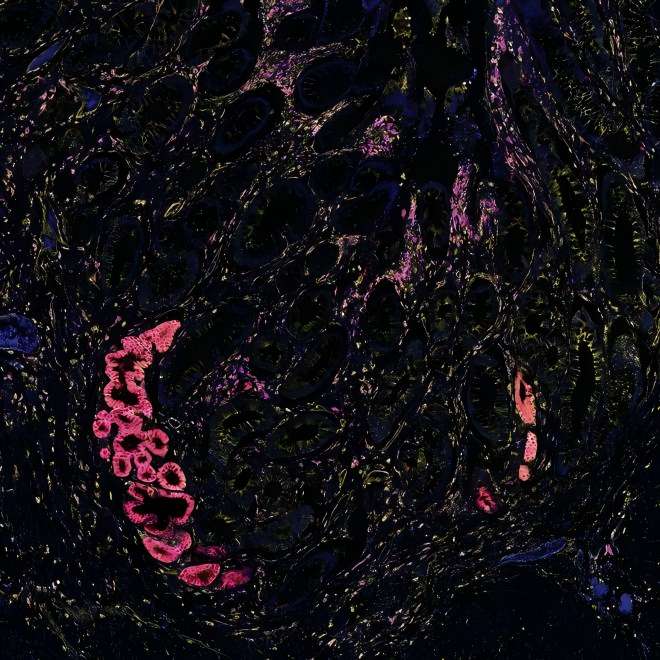
4. The hypolipidemic effect of chamomile total flavonoids
Chamomile total flavonoids are a natural plant compound with multiple biological activities. According to a study by Mireia Maimaiti [27], chamomile total flavonoids have a significant effect on lowering blood lipids and have multiple molecular mechanisms [17]. Chamomile total flavonoids can significantly reduce the levels of serum TG, TC, LDL-C, AST, and ALT in ApoE-/- mice, significantly increase HDL-C, and reduce the level of MDA in mouse liver tissue and increase the level of SOD in the liver. Chamomile total flavonoids can significantly upregulate the expression of PPAR α, CPT1A, and Acox1 proteins, while inhibiting the synthesis of TG in the liver, and the fatty liver lesions in mice were significantly improved [18]. Chamomile total flavonoids can inhibit the activity of liver fatty acid synthase, thereby reducing the rate of liver triacylglycerol synthesis and lowering plasma triacylglycerol levels [10]. Secondly, chamomile total flavonoids can promote the oxidative metabolism of fatty acids, increase the body's consumption of fatty acids, and lower plasma levels of low-density lipoprotein cholesterol (LDL-C) and total cholesterol (TC) [19]. In addition, chamomile total flavonoids can also affect intestinal absorption of lipids, reduce cholesterol absorption, and lower plasma cholesterol levels.
5 Development and application of chamomile extract
Chamomile extract can be developed into a variety of products due to its anti-inflammatory, analgesic, antibacterial and anti-inflammatory effects [20]. Chamomile essential oil mixed with excipients can be used as a treatment for diseases such as mouth ulcers, gingivitis, skin itching and eczema [5-6]. Chamomile extract can be used to make skin care products, shampoos and other products due to its mild characteristics. It has the effect of soothing the skin, reducing skin inflammation and promoting wound healing [21-23]. Chamomile flowers have a fragrant aroma and can be used to make tea, drinks, sweets and other foods. They have the effect of clearing away heat and toxins, relieving anxiety and promoting sleep [24].
The post-pandemic era has raised people's awareness of health consciousness. People are more aware that they cannot let their guard down against the potential and transmissibility of germs, and at the same time pay attention to hygiene and self-protection. However, long-term use of alcohol-based wet wipes for disinfection can dry and crack the skin of the hands, causing varying degrees of damage to the skin barrier. Therefore, research into a new type of mild and safe wet wipes with a long-lasting antibacterial effect will be welcomed by the market. The use of chamomile essential oil, with its good antibacterial, anti-inflammatory and antioxidant effects, combined with other plant essential oils, to make natural, green and safe wet wipes with better results is not a bad way forward for the wet wipe market in the future [25].
Chamomile essential oil nano-capsules are also a future development direction for natural antibacterial agents. Wang Ziwei et al. [26] prepared chamomile essential oil nano-capsules using the ionogel method, with an encapsulation rate of 36.33%. They have an inhibitory effect on the rice sheath blight fungus, the wheat scab fungus, and the corn Curvularia fungus, and have the potential to be developed into a natural fungicide. In the future, chamomile essential oil can be used to make highly effective antibacterial films, liposomes, and nanoemulsions to increase its acceptance in the industrial and medical fields.
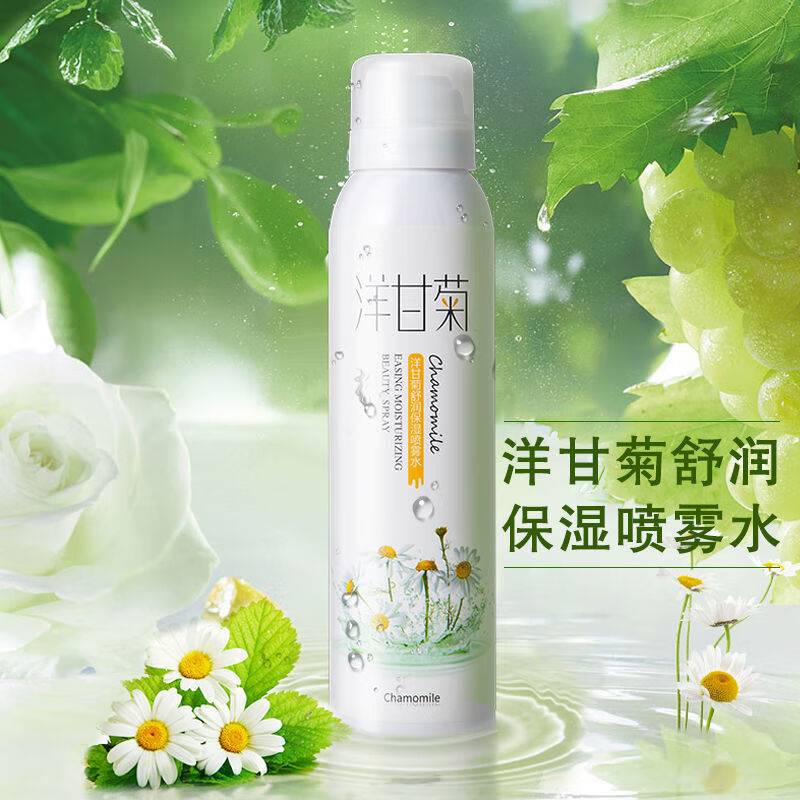
6 Conclusion
In recent years, a great deal of research has been carried out on chamomile. This study reviews the research progress and direction of the volatile oil of this plant in terms of chemical composition, pharmacological effects, and future development. Chamomile volatile oil has antibacterial, anti-inflammatory, antioxidant, anticancer, hypoglycemic, antihypertensive, hypolipidemic, anti-allergic, anti-depressant, organ protective, reproductive protective and neuroprotective effects, of which bisabolol is the main component of chamomile volatile oil. In addition, chamomile essential oil is also used as the main ingredient in skin whitening products, can relieve muscle atrophy, accelerate skin wound healing, and treat asthma.
In summary, chamomile has great economic value due to its numerous pharmacological effects and good biological activity. This study summarizes its biological activity and provides development ideas for the food and pharmaceutical industries.
References:
[1] Zhu Dongliang, Zhang Xiaoyu, Liu Fei, et al. Comparison of the preparation of Roman chamomile oil from Xinjiang by water steam distillation and simultaneous distillation and extraction [J]. Perfume, Essence and Cosmetics, 2016 (3): 25-29+51.
[2] Lu Juan, Xie Dongxue, He Liuyang, et al. Separation and purification, characterization and antioxidant activity of chamomile polysaccharides [J]. Food and Fermentation Industry, 2021, 47 (03): 72-78.
[3] Yang Yansong, Pan Langsheng, YANG Yan-song, et al. Separation and structural determination of flavonoids in chamomile [J]. Applied Chemical Industry, 2008, 37(6): 2.
[4] Bail S, Buchbauer G, Jirovetz L, et al. Antimicrobial Activities of Roman Chamomile Oil From France and Its Main Compounds [J]. Journal of Essential Oil Research, 2009, 21(3): 283-286.
[5]Orav A , Raal A , Arak E . Content and composition of the essential oil of Chamomilla recutita (L.) Rauschert from some European countries [J]. Natural Product Research, 2010, 24(1):48-55
[6] Eddin L B, Jha N K, Goyal S N, et al. Health Benefits, Pharmacological Effects, Molecular Mechanisms, and Therapeutic Potential of α-Bisabolol [J]. Nutrients, 2022, 14(7).
[7] Fu C X. Analysis of the composition of volatile oil and hydrosol of Heilongjiang Roman chamomile and antibacterial experimental research [D]. Jiamusi: Jiamusi University, 2019.
[8] Yang J J. Establishment of chamomile regeneration system and research on anti-inflammatory, antibacterial and antioxidant effects [D]. Hefei: Anhui Agricultural University, 2009.
[9] Roby M H H , Sarhan M A , Selim A H ,et al. Antioxidant and antimicrobial activities of essential oil and extracts of fennel (Foeniculum vulgare L.) and chamomile (Matricaria chamomilla L.) [J]. Industrial Crops & Products, 2013, 44:437-445
[10] Yuan Y, Wang D, Sun B, et al. Research on the application of chamomile essential oil. Anhui Agricultural Science, 2020, 48(23): 211-213.
[11] Merfort I, Heilmann J, Hagedorn-Leweke U, et al. In vivo skin penetration studies of camomile flavones. [J]. Die Pharmazie, 1993, 59(7):A638-A638.
[12] Li Xin, Chen Zaiming, Ge Weiwei, et al. Study on the regulatory effect of German chamomile essential oil on the inflammatory response of human keratinocytes induced by lipopolysaccharide [J]. New Chinese Medicine and Clinical Pharmacology, 2022, 33 (5): 624-632.
[13] Shen Junlian, Zhang Nan, Li Yuhong, et al. Study on the effect of German chamomile essential oil in promoting skin wound healing [J]. Chinese Journal of Agricultural Sciences, 2020, 36 (4): 67-75.
[14] Yuan Y, Long Z J, Yang J J, et al. Study on the anti-inflammatory effect of chamomile essential oil [J]. Pharmaceutical Biotechnology, 2011, 18 (1): 52-55.
[15] Stanojevic L P , Marjanovic-Balaban Z R, Kalaba V D ,et al. Chemical Composition, Antioxidant and Antimicrobial Activity of Chamomile Flowers Essential Oil(Matricaria chamomilla L.) [J]. Journal of Essential Oil Bearing Plants, 2016, 19(8):2017-2028.
[16] Wang Jianying. A compound traditional Chinese medicine volatile oil with multiple effects, its preparation method and application [P]. CN114272347A, 2022-04-05.
[17] Li Qian, Zhang Bosheng, Lu Jun, et al. A research method for the screening and extraction process of active ingredients in chamomile for the treatment of asthma [P]. Xinjiang Uygur Autonomous Region: CN112763609B, 2022-08-26.
[18] Qian X, Chen G, Wang F, et al. Preparation and antibacterial activity analysis of volatile oil emulsion of chamomile [J]. China Food Additives, 2022 (005): 033.
[19] Lan W. Research on the effect and mechanism of chamomile total flavonoids on cell lipid metabolism [J]. China Food Additives, 2022, 33 (8): 10.
[20] El Mihyaoui A, Esteves da Silva J C G, Charfi S, et al. Chamomile (Matri- caria chamomilla L.): A review of ethnomedicinal use, phytochemistry and pharmacological uses [J]. Life, 2022, 12(4): 479.
[21] Tan Huiwen, Chen Bingting, Yilize Abudula, et al. Study on the monosaccharide composition and in vitro antioxidant activity of German chamomile and Roman chamomile polysaccharides [J]. China Food Additives, 2022, 33(2): 161-167.
[22] Wei Feixue, Li Xiaoju, Xiong Sisi, et al. Research on the quality standard of the volatile oil in Punyangzhengqi capsules [J]. Pharmacy Practice and Service, 2022, 40 (6); 557-562.
[23] Niu Hao, Wang Pengyu, Yu Jinping, et al. Study on the extraction of active ingredients from Roman chamomile by Saccharomyces cerevisiae fermentation [J]. Heilongjiang Science, 2022, 13(12): 13-15.
[24] Du Dan, Fan Ronghua. Research on the improvement of reproductive function of PCOS rats by chamomile extract based on PI3K/AKT pathway [J]. Journal of Translational Medicine, 2022, 11(3): 146-150.
[25] Tong Jinhao, Liu Hongxia, Ding Rongliang. Extraction of German chamomile essential oil by water distillation and GC-MS analysis [J]. Journal of Qiqihar University (Natural Science Edition), 2021, 037 (001): 80-82+88.
[26] Wang Ziwei, Yuan Yi, Liang Xueping, et al. Preparation and antifungal properties of nanocapsules of German chamomile essential oil [J]. Anhui Agricultural Science, 2022, 50(10): 157-160.
[27] Mireya Mamat, Wang Ying, Zhao Shengjun, et al. Analysis of the total flavonoid components of chamomile and their inhibitory effect on pancreatic lipase [J]. Chemical and Biological Engineering, 2021, 38 (06): 62-67.


 English
English French
French Spanish
Spanish Russian
Russian Korean
Korean Japanese
Japanese